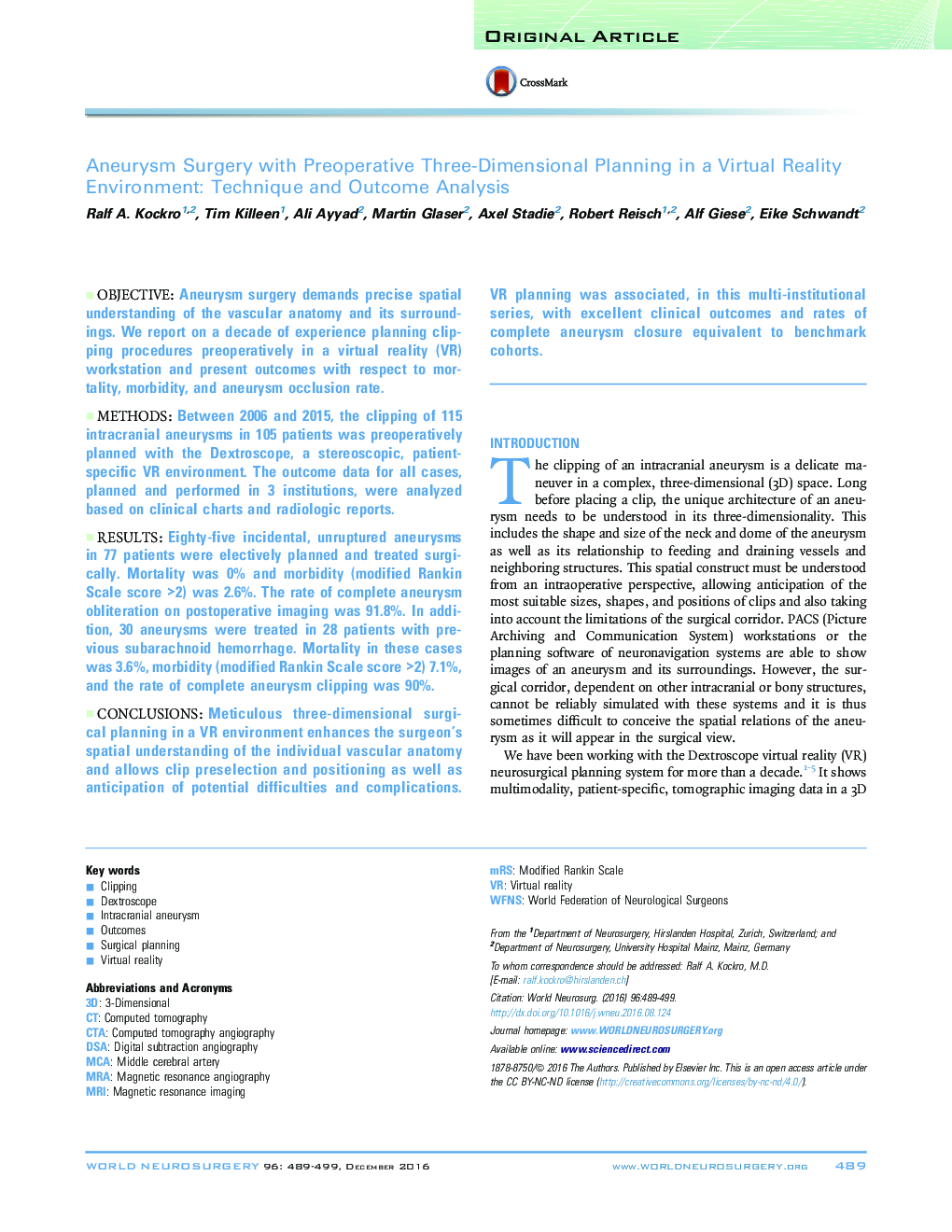| کد مقاله | کد نشریه | سال انتشار | مقاله انگلیسی | نسخه تمام متن |
|---|---|---|---|---|
| 5635058 | 1581459 | 2016 | 11 صفحه PDF | دانلود رایگان |
ObjectiveAneurysm surgery demands precise spatial understanding of the vascular anatomy and its surroundings. We report on a decade of experience planning clipping procedures preoperatively in a virtual reality (VR) workstation and present outcomes with respect to mortality, morbidity, and aneurysm occlusion rate.MethodsBetween 2006 and 2015, the clipping of 115 intracranial aneurysms in 105 patients was preoperatively planned with the Dextroscope, a stereoscopic, patient-specific VR environment. The outcome data for all cases, planned and performed in 3 institutions, were analyzed based on clinical charts and radiologic reports.ResultsEighty-five incidental, unruptured aneurysms in 77 patients were electively planned and treated surgically. Mortality was 0% and morbidity (modified Rankin Scale score >2) was 2.6%. The rate of complete aneurysm obliteration on postoperative imaging was 91.8%. In addition, 30 aneurysms were treated in 28 patients with previous subarachnoid hemorrhage. Mortality in these cases was 3.6%, morbidity (modified Rankin Scale score >2) 7.1%, and the rate of complete aneurysm clipping was 90%.ConclusionsMeticulous three-dimensional surgical planning in a VR environment enhances the surgeon's spatial understanding of the individual vascular anatomy and allows clip preselection and positioning as well as anticipation of potential difficulties and complications. VR planning was associated, in this multi-institutional series, with excellent clinical outcomes and rates of complete aneurysm closure equivalent to benchmark cohorts.
Journal: World Neurosurgery - Volume 96, December 2016, Pages 489-499
